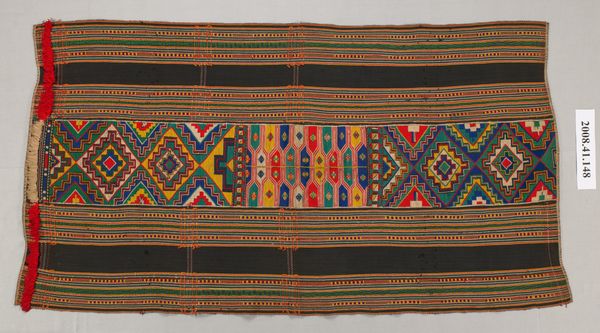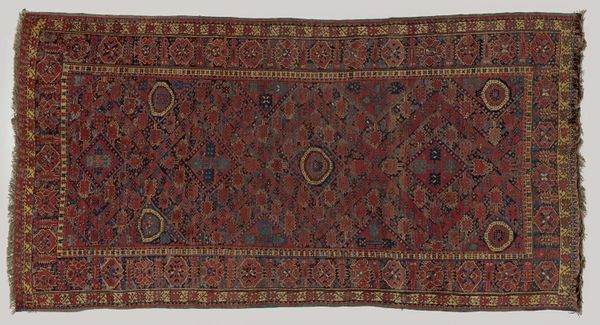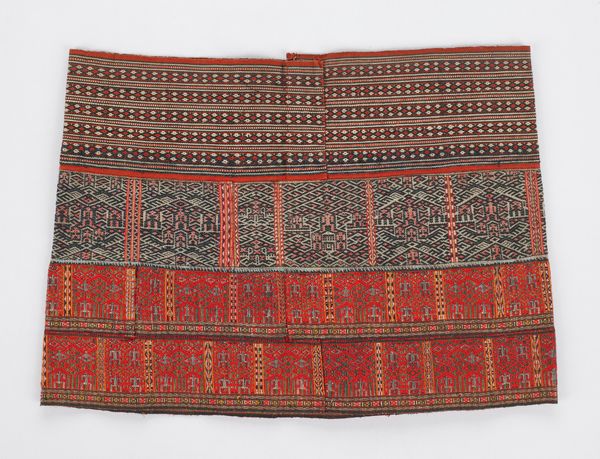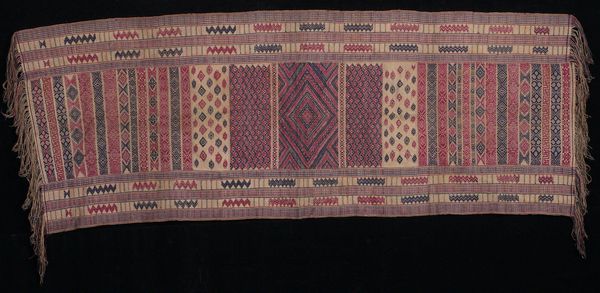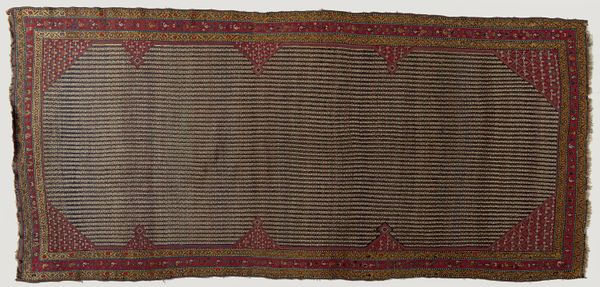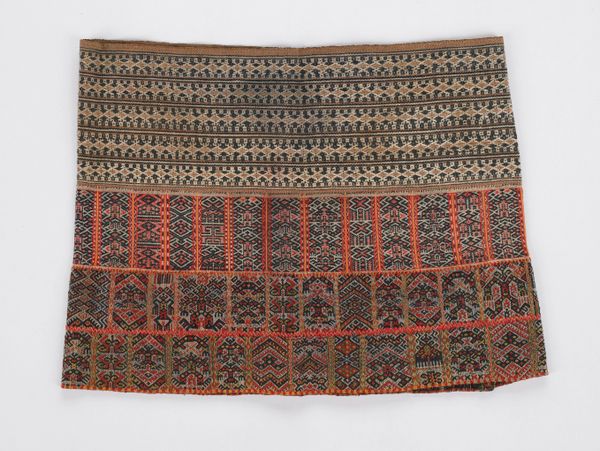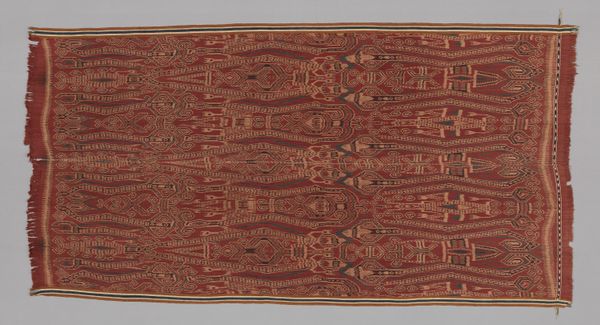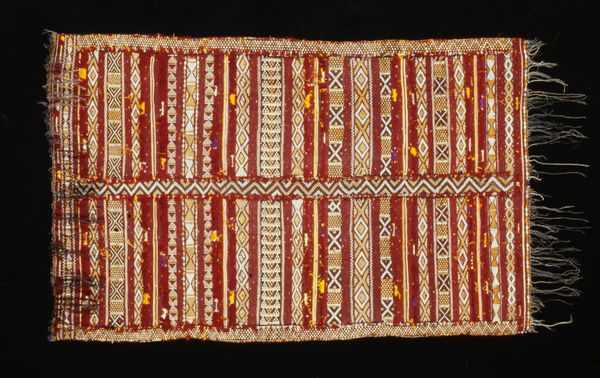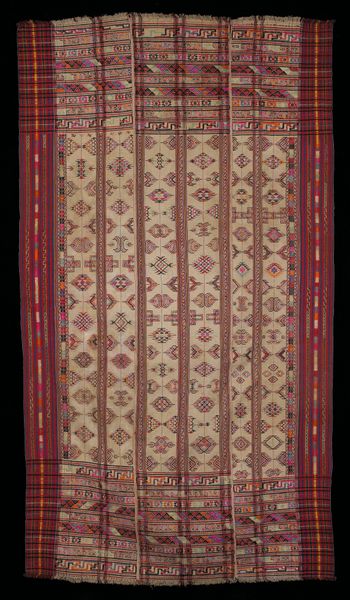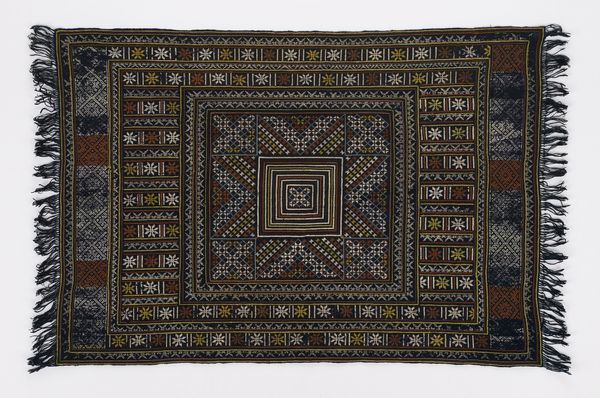
fibre-art, silk, weaving, textile, cotton
#
fibre-art
#
silk
#
weaving
#
textile
#
cotton
Dimensions: 24 1/4 x 48 in. (61.6 x 121.92 cm)
Copyright: Public Domain
Curator: Here we have a fascinating example of a textile artwork, simply titled "Skirt," dating back to the 20th century, a vibrant piece currently housed at the Minneapolis Institute of Art. The artist or origin of this artwork is, to this day, not fully known, so its interpretation and preservation is vital. It seems to utilize materials like cotton, silk and other fibre art to achieve such a layered design. What are your first thoughts on it? Editor: My immediate reaction is to its subdued yet hopeful nature. The dark base contrasts sharply with the band of vibrant color running through the center. It evokes a sense of resilience. Curator: Absolutely. Considering its medium and purpose as a garment, this “Skirt” likely carried deep social meaning. Textiles are crucial cultural artifacts in many communities globally. This piece, in its design and construction, could have represented the status, beliefs, or affiliations of its wearer within a very specific societal hierarchy. Editor: Indeed. And I'm drawn to the symbolic language. The repeated diamond shapes along the central panel for instance—diamonds often represent clarity, enlightenment. Their repetition here could indicate a desire or prayer for guidance in one's path in life. Furthermore, in certain cultures diamonds signify wealth and abundance—but not just in the monetary sense. They might represent the treasures of the spirit or intellect. Curator: I find myself agreeing, though also I cannot help to notice the potential impact of museum settings in influencing that very interpretation. An object's context is crucial. A museum label can instantly change our understanding. In other words, we risk removing this skirt from the actual cultural moments of the time, but isn't this the fundamental task of cultural stewardship and interpretation, anyway? Editor: It's a double-edged sword. We strive to provide context and enrich the experience, and in doing so we might unintentionally steer interpretations, I suppose. It forces us to always ask 'whose history?' Curator: Precisely. A challenge and also privilege for the institution and its curators. Thank you for that illuminating interpretation. Editor: The pleasure was all mine. What a poignant piece!
Comments
No comments
Be the first to comment and join the conversation on the ultimate creative platform.
